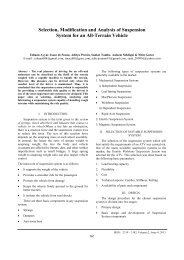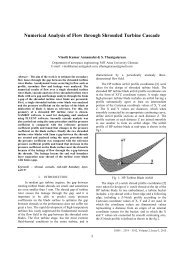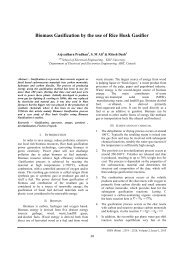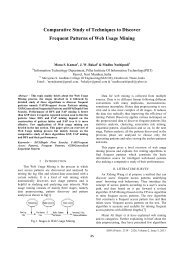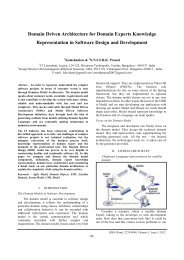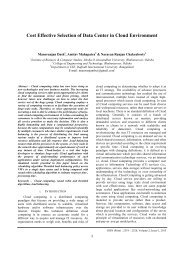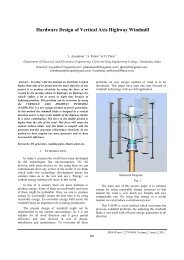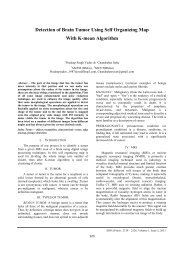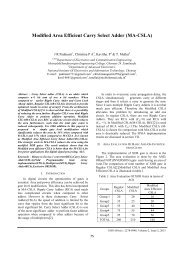Transient Stability Analysis Using MATLAB Simulink and ... - IRD India
Transient Stability Analysis Using MATLAB Simulink and ... - IRD India
Transient Stability Analysis Using MATLAB Simulink and ... - IRD India
Create successful ePaper yourself
Turn your PDF publications into a flip-book with our unique Google optimized e-Paper software.
I n p u t S i g n a l sO u t p u t S i g n a l sInternational Journal on Advanced Computer Theory <strong>and</strong> Engineering (IJACTE)adaptive system. By adaptive, it means that eachparameter is changed during its operation <strong>and</strong> it isdeployed for solving the problem in matter. This iscalled the training phase.A artificial neural network is developed with asystematic step-by-step procedure which optimizes acriterion commonly known as the learning rule. Theinput/output training data is fundamental for thesenetworks as it conveys the information which isnecessary to discover the optimal operating point. Inaddition, a non- linear nature make neural networkprocessing elements a very flexible system.Input LayerMiddle LayerOutput LayerFig 7 Structure of Artificial neural networkThe neuron computes the weighted sum of the inputsignals <strong>and</strong> compares the result with a threshold value,. If the net input is less than the threshold, the neuronoutput is –1. But if the net input is greater than or equalto the threshold, the neuron becomes activated <strong>and</strong> itsoutput attains a value +1.X ix i w i1 1,if X Y 1,if X nThe neuron uses the following transfer or activationfunction. This type of activation function is called a signfunction.Fig 8 Possible active functions used in Neural NetworkV. TRAINING OF NEURAL NETWORKTraining to neural network small adjustments in theweights to reduce the difference between the actual <strong>and</strong>desired outputs of the perceptron. The initial weightsare r<strong>and</strong>omly assigned, usually in the range [0.5, 0.5],<strong>and</strong> then updated to obtain the output consistent with thetraining examples. It can be done by going to matlabnntoolbox.NN toolbox can be open by enteringcomm<strong>and</strong> >>nntool. It will open NN Network/ DataManager screen.Let P denote the input <strong>and</strong> T denote thetarget/output.In Matlab as per the guidelines of implementationthese are to be expressed in the form of matrices:T = [0 1 1 0]To use a network first design it, then train it beforestart simulation. We follow the steps in order to do theabove:Step-1: First we have to enter P <strong>and</strong> T to the NNNetwork Manager. This is done by clicking New Dataonce.Step-2: Type P as the Name, <strong>and</strong> corresponding matrixas the Value, select Inputs under Data Type, thenconfirm by clicking on Create.Step-3:Similarly, type in T as the Name, <strong>and</strong>corresponding matrix as the Value, select Targets, underData Type , then confirmStep-4: Now we try to create a Network. For this clickon New Network.Make Sure the parameters are as follows:Network Type = Feed forward – Back propTrain Function = TRAINLMAdaption Learning Function = LEARNGDMPerformance Function = MSENumbers of Layers = as per the requirementStep-5: Select Layer 1, type in 2 for the number ofneurons, & select TANSIG as Transfer Function.Select Layer 2, type in 1 for the number of neurons, &select TANSIG as Transfer Function.Step-6: Then, confirm by hitting the Create button,which concludes the network implementation phase.Step-7: Now, highlight Network with DOUBLE click,then click on Train button.Step-8: On Training Info, select P as Inputs, T asTargets.136ISSN (PRINT) : 2320 – 8945, Volume -1, Issue -6, 2013



